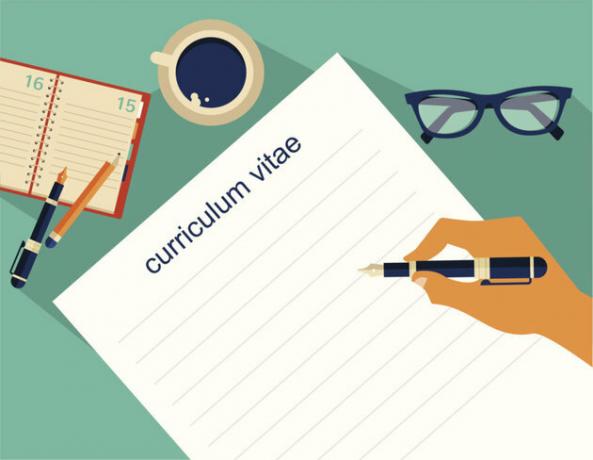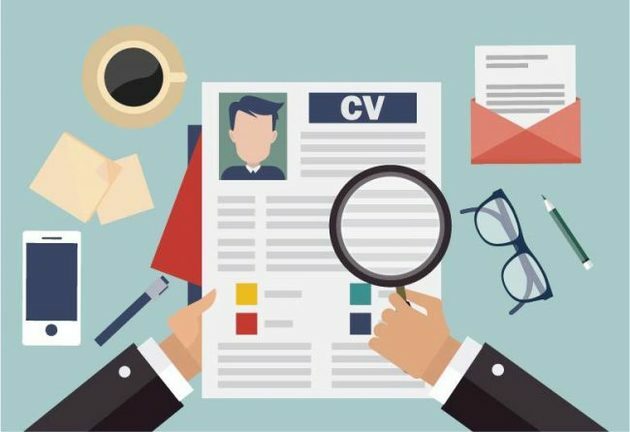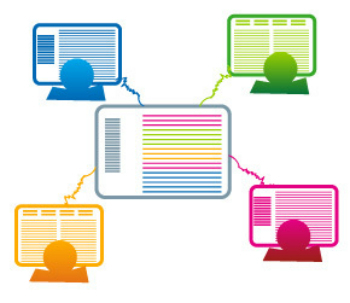O resume professional, also called curriculum vitae (CV), is a textual genre that aims to win a job opening. Therefore, nothing is more important than knowing how to produce a good resume that will catch the attention of those who analyze it.
Note that nowadays there are several models of resumes for consultation and even for editing an online one. However, here you will find the best tips for producing a resume that will shine.
Although there is no one right template, the key is to present a well-structured and error-free resume; and for this, the candidate must have time available to plan the document that will result in winning the job vacancy.
Structure: how to make a good resume?

Photograph
These days, many job openings ask for a photo on the resume. This is not mandatory, but it can help the document. So, opt for a 3x4 photo to be at the top of the document and be formal.
Personal data
Full name, address, age, date of birth, city, telephone and e-mail are some of the most important data and should be at the top of the curriculum, as an introduction to the text. They can appear next to the photo.
Note that we must not add excessive data and that are irrelevant to winning a vacancy such as RG and CPF.
Intended vacancy
Many candidates choose to write the job opening being sought, for example: graphic designer. This is also because a company may have several vacancies open and to better clarify this, the person better identifies and directs their resume.
Goals)
As a brief introduction, the candidate will be able to write, in a few lines, the objective he intends, for example: “to expand my knowledge in the most diverse areas.”
Skills
Some models have a part of skills, where the competitor can briefly write some of their skills that may be relevant to win the desired position.
Some skills that can be interesting depending on the position are related to communication, leadership, empathy, initiative, teamwork, organization and planning, etc.
Academic education
This is a crucial part of the curriculum vitae, where the person will indicate their level of education: according to complete degree, licentiate, bachelor's, postgraduate, specialization, master's, doctorate, post doctoral.
Of course, we must write the name of the institution, as well as indicate the start and end date of the academic path.
If in this case the candidate is still studying, he can indicate in parentheses this information, for example: Degree in international relations (in progress). Another important point is to list, for example, exchanges that have been carried out.
Complementary courses
In addition to academic qualifications, the person will be able to place some courses that have been taken and that may be relevant to the vacancy. In addition to the course name, date and location, the number of hours can be added.
Participation in events
In addition to the complementary courses, the candidate will also be able to place their participation in congresses, symposia, lectures, workshops, etc. In that case, presentations can also be added here.
Professional experience
An essential part of the résumé is undoubtedly the professional experiences that must accompany: company name, position, starting and leaving date, as well as the functions performed.
It is important to emphasize that only the last 5 years of work must be presented so that it is not an exhaustive text.
In addition, the person should focus on the experiences that are most relevant to the position and present this chronologically.
Foreign languages
The knowledge of foreign languages is without a doubt a great differential nowadays for those who want to gain a place in the job market.
Here, the competitor can indicate the institution and the dates of the course. It is also important to inform the level: basic, intermediate, advanced (or fluent).
Tips for writing a resume

Check below 5 essential tips to produce a good resume:
- write in simple language: it's no use writing in a “difficult” way to impress the reviewer. So, instead of helping you, this can hinder the achievement of a vacancy. So be simple and straightforward.
- don't be wordy: no matter how extensive their professional and academic experience, the candidate must not submit a resume with more than two pages. Imagine that hundreds of people are claiming that vacancy. Therefore, the person who will be evaluating will not have time to read all the information.
- focus on organization: nothing more pleasant than reading an organized document, where we can easily find the information we want. For this, subtitles in capital letters and bold are good resources that should be used to help the reader.
- never lie: even though this is obvious, it is very important for the person to be honest with all the information that is being put on a resume. Remember that this might be uncomfortable for you at some point in the interview.
- Do a final review: nothing is more unpleasant for those who are analyzing the resume than finding spelling or typos. Therefore, before printing your resume or sending it to get a job opening, be careful to reread the information posted there.
Curriculum Vitae x Curriculum Lattes

While the curriculum vitae focuses on your professional experience, the lattes curriculum presents relevant information from your entire academic trajectory. In other words, it is a model for an academic curriculum.
In Brazil, there is a platform, the so-called "lattes platform", which is managed by the CNPq (Council National Scientific and Technological Development) and aims to promote research scientific.
There, students and researchers register their academic path, from higher education courses, participation and presentations in congresses, awards and publications.
This large database platform is available for public consultation, where it is possible to find the résumés of several researchers in the country.
Curiosities
- The term curriculum vitae, in Latin means "Life path".
- The term "lattes platform" is a tribute to the Brazilian physicist Cesare Mansueto Giulio Lattes (1924-2005), better known as César Lattes.
- In Europe, there is a European curriculum model, called the Europass.

